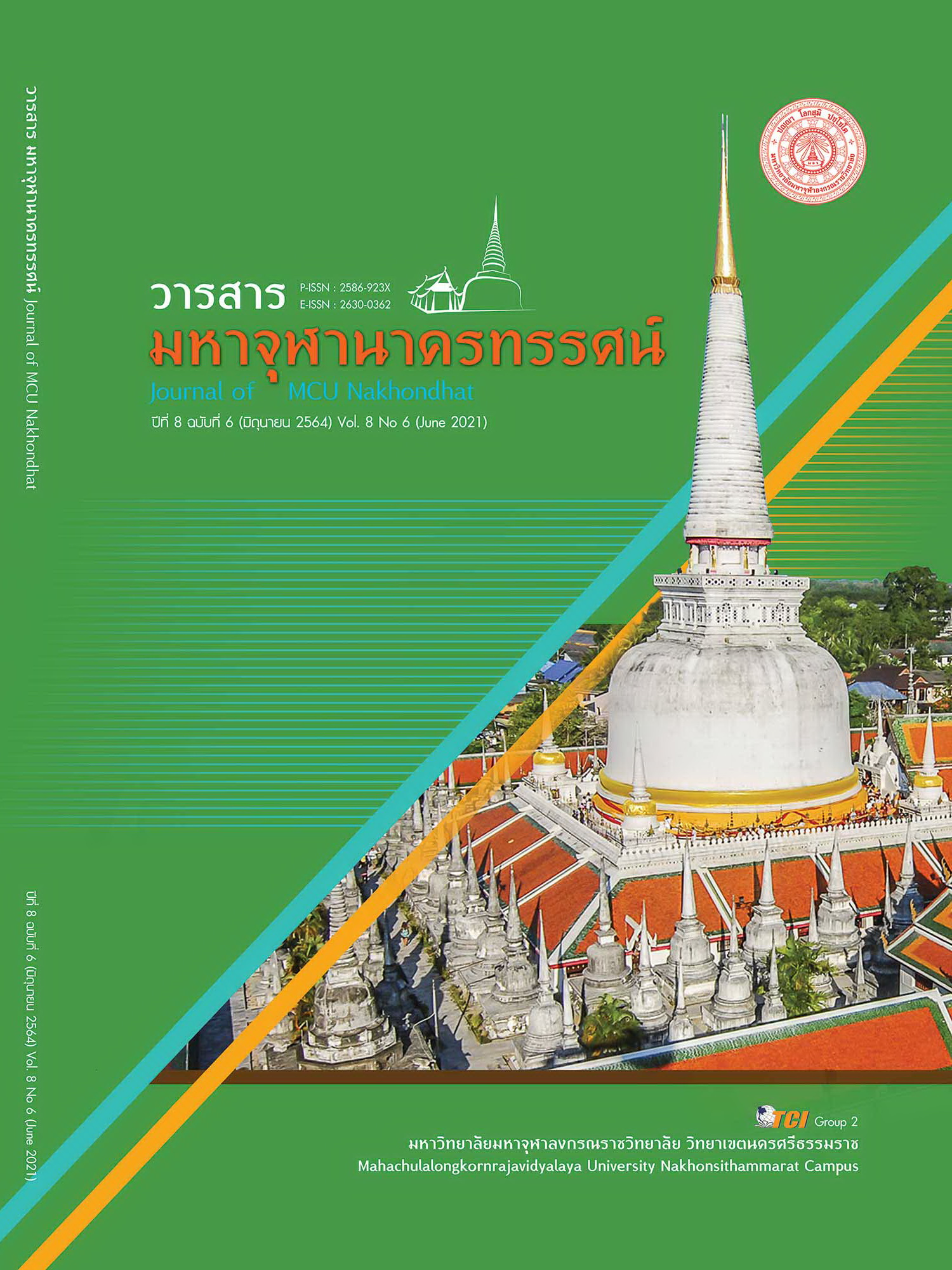THE TRAINING MANAGEMENT APPROACHES FOR DEVELOPING THE PERSONELL AIRSIDE COMPETENCY IN THE AVIATION FIELD
Main Article Content
Abstract
This research article was mixed - method with an interviews and survey research aimed to 1) study the state of training development in the aviation field, 2) determine the training management approaches for developing the personnel airside competency, and 3) Assess suitability of the training approaches for developing the personnel airside competency. Sample size was 292 personnel airside operation authorities, 5 specialists in the aviation field participated in in - depth interview, 7 specialists in the aviation field participated in focus group, and 15 specialists in the aviation field participated in the suitability assessment of the training approaches. The tools used in the research were in - depth interviews, questionnaires, and evaluation form. Statistics used in data analysis were mean, standard deviation, and factor analysis. The results of the research found that 1) Overall, the training need for developing the personnel airside competency was at high level, the cultural development factors was at high level, and the motivation factors was at high level. 2) The training management approaches for developing the personnel airside competency could be characterized as a set of 2.1) the required competencies including motivation, airport access, inspection of the movement area and obstacle, and sweeping and cleaning for parking lots 2.2) content 2.3) purpose and 2.4) evaluation indicators for developing the personnel airside competency and, 3) the suitability of the training management approaches for developing the personnel airside competency is rated to be at highest with low variance.
Article Details
References
สถาบันการบินพลเรือน. (2562). เกี่ยวกับสถาบันการบินพลเรือน. เรียกใช้เมื่อ 8 กุมภาพันธ์ 2563 จาก http://www.catc.or.th/2015/index.php/th
สุฐิต ห่วงสุวรรณ และ พลสัณห์ โพธ์ิศรีทอง. (2558). การวิเคราะห์สมรรถนะเพื่อการฝึกอบรมและพัฒนาผู้จัดการท่าอากาศยานนานาชาติในตลาดการบินเดียวอาเซียน. EAU Heritage Journal, 5(3), 316-333.
Ivancevich J. M. and Konopaske, R. (2011). Human resources management. (12th Ed.) New York: McGraw Hill Inc.
Kandula, S. R. (2013). Competency - Based Human Resource Management. Delhi: PHI Learning Private Limited.
Khee, L. Y. (2009). Evolution of aircraft maintenance training. Journal of Aviation Management, 9(6), 9-16.
Krejcie, R. V. & Morgan, D. W. (1970). Determining Sample Size for Research Activities. Educational and Psychological Measurement, 30(3), 607-610.
Likert, R. (1961). New pattern of management. New York: McGraw – Hill.
Nassazi, A. (2013). Effects of training on employee performance : : evidence from Uganda. Vassa, Finland: University of Applied Sciences.
Quick, J.C. & Nelson, D.L. (2013). Principles of organizational behavior realities and challenges. (8th ed.) South - Western: Cengage Learning.
Raymond, N. A. . (2010). Employee training and development. New York: The Ohio State University.
Schermerhorn, J.R. (2011). Management. (11th Ed). New York: John Wiley & Sons.


